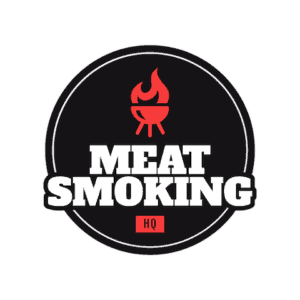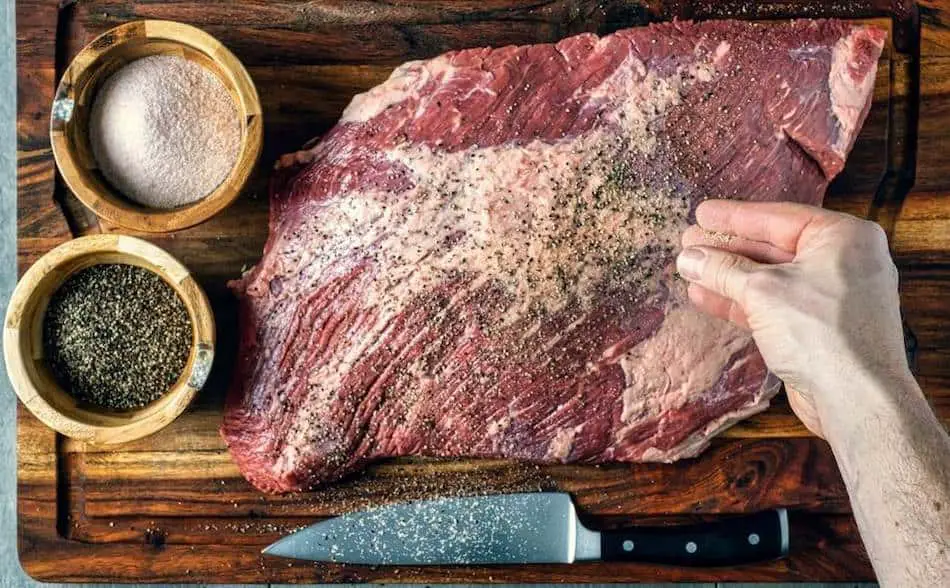
Brining is a well-known method to help meat retain moisture, taste tender, juicy and full of flavor. Brining is common when smoking turkey, pork belly and other meats, but what about brisket? I found out all I could about brining brisket and if it makes a difference.
The salt in a brine will help the brisket retain moisture during the long cooking process, and it will add flavor to the meat. The only brine we should apply to brisket is a dry brine, which differs from a wet brine. A dry brine involves rubbing salt into the brisket anywhere from 2 to 24-hours prior to smoking. Brisket is a large cut of meat, therefore it will take a long time for the salt to penetrate the meat, which is why it’s better to dry brine the day before smoking.
This brisket injection marinade is the secret used in competitions and made by a World Barbecue champion.
| Brining Brisket | Benefits | Method |
|---|---|---|
| Brining is a well-known method to help meat retain moisture, taste tender, juicy and full of flavor. | Retains moisture during the long cooking process, adds flavor to the meat | Dry brine: Rub salt into the meat anywhere from 2 to 24 hours prior to smoking |
| Wet brining is not recommended for brisket | Can dilute the flavor of the meat, may make it taste more like corned beef | Soaking the meat in a wet brine solution |
| Dry brining is the best technique for brisket | Clean, effective, and won’t take away from the natural meat flavor | Rub salt on the meat and leave it in the refrigerator overnight, or for at least 2 hours if you don’t have time to brine for longer |
| Optionally, you can also apply a rub at the same time as the dry brine to add flavor to the meat | Adds flavor to the meat | Apply a rub at the same time as the dry brine |
Key Points
- Brining brisket is a method to help retain moisture, make the meat tender, juicy, and full of flavor
- Dry brining, which involves rubbing salt into the meat, is the recommended method for brisket
- Wet brining is not recommended, as it can dilute the meat’s flavor and make it taste like corned beef
- Dry brine the brisket at least 2 hours before smoking, or ideally the day before and leave it in the refrigerator to allow the salt to penetrate the meat
- A variety of salt can be used for dry brining, including kosher salt
- Optional additional flavor can be added through the use of a meat rub
- Smoke the brisket while it is cold to allow it to attract more smoke and have a smokier flavor
What the Experts Say
Brining brisket is a popular method among barbecue pitmasters and competition cooks to help the meat retain moisture, become tender, juicy, and full of flavor. While brining is common when smoking turkey, pork belly, and other meats, the question remains: does it make a difference when it comes to brisket?
According to Aaron Franklin, pitmaster and owner of Franklin Barbecue in Austin, Texas, the answer is a resounding yes.
“Brining is one of the best ways to ensure that your brisket will turn out moist and flavorful,” Franklin says. “The salt in the brine solution helps the meat retain moisture during the long cooking process, and it adds a depth of flavor that can’t be achieved any other way.”
Aaron Franklin
But not all brining methods are created equal when it comes to brisket. While wet brining – soaking the meat in a solution of water and salt – can work well with white meats, it is not the best choice for red meat like brisket.
“Wet brining can dilute the flavor of the meat, and it can also make the brisket taste more like corned beef,”
Myron Mixon, pitmaster and owner of Jack’s Old South BBQ in Unadilla, Georgia.
That’s where dry brining comes in. Dry brining involves rubbing salt directly into the meat, allowing it to penetrate the meat and work its magic.
“Dry brining is the way to go with brisket. It’s clean, it’s effective, and it won’t take anything away from the natural flavor of the meat.”
Tuffy Stone, pitmaster and owner of Q Barbeque in Richmond, Virginia.
So how do you dry brine a brisket? The process is simple:
- Start with a high-quality salt. Kosher salt is a good choice, as it has a clean, pure flavor and is less processed than table salt.
- Rub the salt into the brisket, making sure to cover every surface of the meat.
- Place the brisket in a large resealable bag or wrap it in plastic wrap.
- Leave the brisket in the refrigerator overnight, or for at least 2 hours if you don’t have time to brine for longer. The longer the salt has to penetrate the meat, the better the results.
- Optionally, you can also apply a rub at the same time as the dry brine to add even more flavor to the meat. Just make sure to use a rub with a low salt content, as the brisket will already be salted from the dry brine.
Once your brisket is properly dry brined, it’s time to smoke it. But there’s one more important factor to consider: temperature.
“I always recommend smoking brisket at a cold temperature. A cold brisket will attract more smoke, which will give it a deeper, smokier flavor.”
Mike Mills, pitmaster and owner of 17th Street BBQ in Murphysboro, Illinois
So, when it’s time to smoke your brisket, don’t bring it to room temperature first. Instead, take it straight from the refrigerator and place it in the smoker.
Brining brisket may seem like an extra step, but the results are worth it.
“Brining makes a huge difference in the tenderness and juiciness of the meat. t’s a game-changer, and I always brine my brisket before smoking.”
Melissa Cookston, pitmaster and owner of Memphis BBQ Co. in Horn Lake, Mississippi.
Benefits and Method of Brining Brisket
Brining brisket is a good way to ensure the meat will be moist, tender, and full of flavor. Brine solution is mostly salt, and is applied to the meat as a wet brine, dry brine or injection. Brining your brisket before smoking will help the meat retain moisture during the long cooking process. When meat is cooking, moisture gets drawn out and evaporates on the surface. If you have salted the meat, the salt helps the meat reabsorb moisture.
Dry Brining vs. Wet Brining for Brisket
So should you wet brine or dry brine a brisket? Dry brining is the best technique for brisket because it’s clean, effective and won’t take anything away from the natural meat flavor. Wet brining works well with white meats, but isn’t suited to red meat. Soaking red meat in water will dilute the flavor of the brisket, and will end up tasting more like corned beef, whereas dry brining will retain the natural meat flavor.
If you don’t have a meat injectors, you can get one for about $30 on Amazon: Simple Meat Injectors.
How to Dry Brine Brisket
To dry brine a brisket, rub salt on the meat and leave it in the refrigerator overnight. If you don’t have time to dry brine the day before, allow 2-hours minimum. The longer you can let the salt penetrate the meat, the better. Another option is to apply a rub at the same time, so the spices can also work their way into the meat. Keep in mind that some meat rubs have a high salt content.
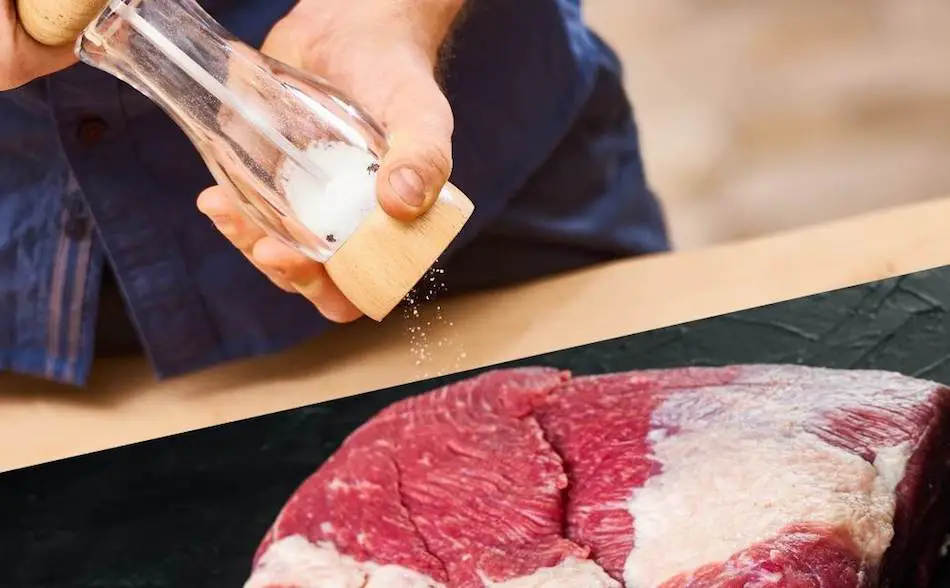
Optimal Brining Time for Brisket
The minimum time to brine brisket is about 2-hours, but 12 to 24 hours is preferable. The time you brine a brisket will depend on the size. The salt is going to need time to work its way into the meat. For the best results, plan to brine the brisket the day before and leave it in the refrigerator. Rub some quality salt like kosher salt into the meat and wrap it in plastic. When you are ready to smoke the brisket, don’t bring the meat to room temperature before putting it into the smoker. Take the cold brisket out of the refrigerator and place it directly into the smoker. A cold brisket will attract more smoke, therefore make a smokier brisket.
For more information and brine recipes, check out our Step-By-Step Guide To Brining Brisket.
Best Salt for Brining Brisket
Table salt is the most familiar type of salt and is suitable for dry brining brisket, but isn’t the best choice. Some table salt contains iodine and other additives to prevent the formation of lumps. Kosher salt is a popular choice of salt among pitmasters because it has large granules and no iodine. Kosher also uses anti-caking agents to prevent the salt from lumping together. Sea salt can be viewed as a bit of a marketing gimmick and contains other minerals such as calcium, potassium and magnesium. Never use curing salts on your brisket, because they contain preservatives. Save the curing salts for your bacon.
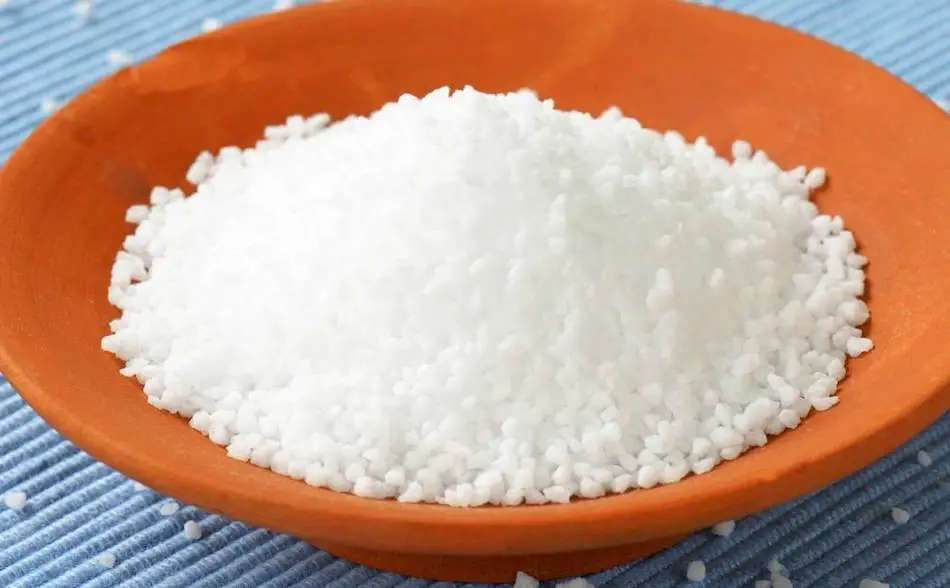
Does Brining Brisket Help?
Brining your brisket before smoking will help prevent the meat from becoming dry. A lot of liquid gets lost during the long cooking process, and the salt in the brining will help the meat reabsorb moisture while it’s being cooked. To get a moist and tender brisket, there are a few things that you need to get right. First, the brisket needs to be cooked low-and-slow. If you can’t control the temperature of your smoker, then there’s a good chance the meat will turn out dry. Second, if the brisket has no marbling, then it will probably be dry. So if you brine the brisket, keep the temperature under 195-200°F, and select a brisket with good marbling, then you will increase the chances of having a moist, tender brisket.
Avoid Wet Brines for Brisket
Unless you are making corned brisket, avoid wet brining brisket because you will lose too much flavor. When beef soaks in a wet brine solution, it can dilute the meat flavor. Wet brines work well with poultry and pork, but not beef. Corned brisket is delicious, but it’s different to the brisket we use when smoking.
Five Tips To Avoid a Dry Brisket
Brining is only one way to ensure your brisket turns out moist and full of flavor. There are several other things you can do to make sure you nail your smoked brisket every time.
1. Buy a Brisket With Marbling
Selecting the right brisket is one of the most important parts of the process, yet it’s often overlooked. Choosing a brisket with good marbling will help the meat stay moist. Marbling is the fatty striations that are found in the meat, and these fatty streaks will melt when cooking. When the fat melts, it will render into the meat, adding moisture. Meat is graded and given a marbling score between 3 and 13. A lower grade of beef will have a marbling score of 3, and a higher quality brisket such as Wagyu will have a score of 13. For more information on selecting the best brisket, check out our Brisket Buyers Guide.
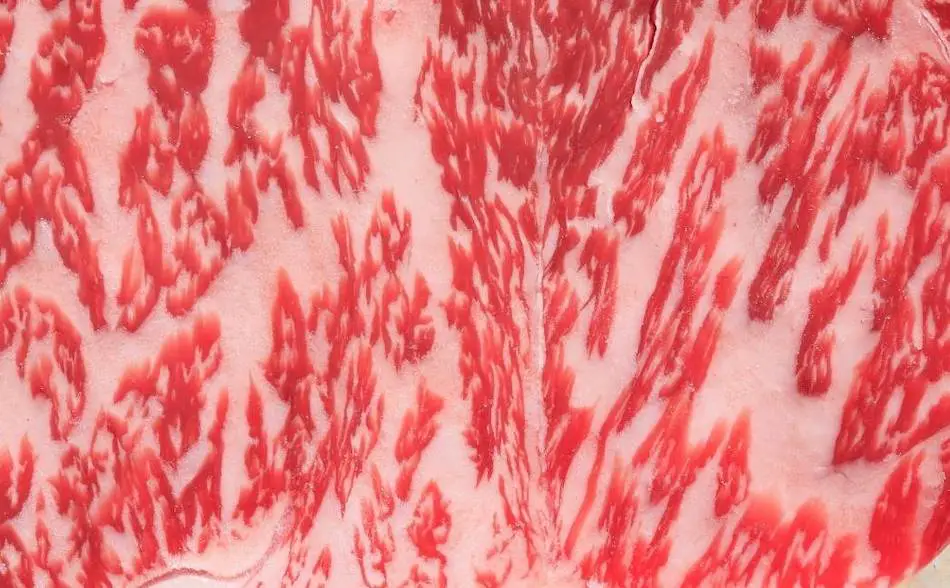
2. Wrap Your Brisket
Wrapping is one of the most important steps in the smoking process. Wrapping the brisket with aluminium foil or butcher paper with prevent the meat from drying out. The wrapping will create steam, which will keep the brisket moist. Wrapping will also prevent the meat from taking on too much smoke and help the brisket push through the stall. Check out the Brisket Wrapping Guide.
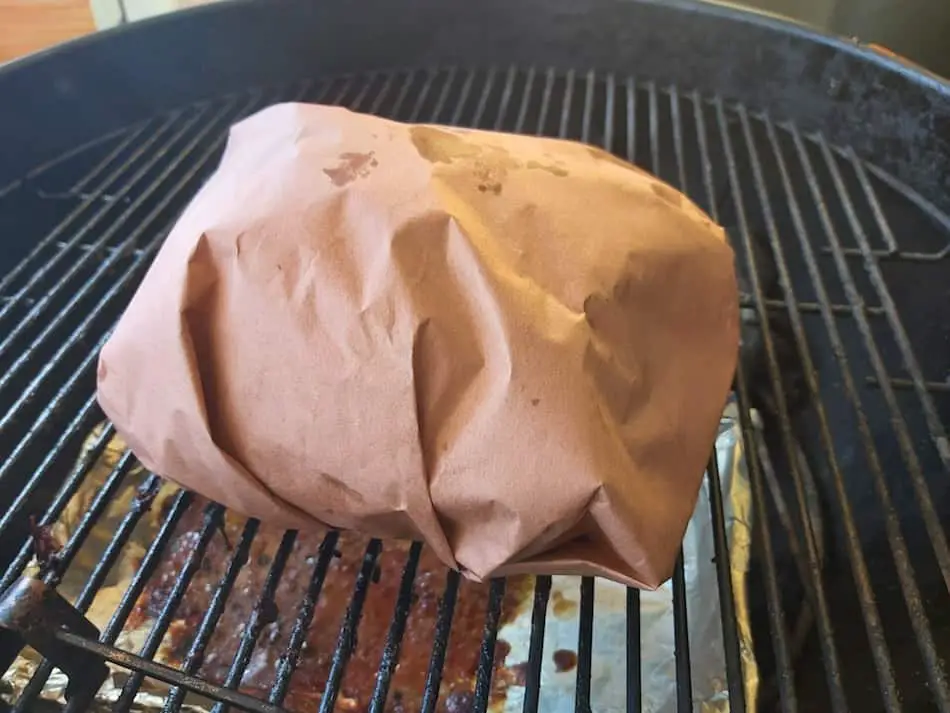
3. Keep The Temperature Low
Smoke your brisket between 195-200°F. If you cook at higher temperatures, all the liquid in the meat will escape and make your brisket dry. So controlling your smoker is very important. Electric, gas and pellet smokers are as easy to control as a conventional oven, however, charcoal and offset smokers are more difficult.
4. Consider Injecting Your Brisket
A great way to get some extra moisture into your brisket is by injecting. You can buy a meat injector online or at your barbecue store. Injectors are inexpensive and easy to use. The best liquid solution to inject a brisket is bone broth or a marinade. Not only will the liquid solution add much needed moisture, it will also give the brisket a flavor boost. For more information on injecting, check out this article: Should I Inject Brisket?
Beware Of Salt In Your Rub
I prefer to leave salt out of my barbecue rub and salt the meat separately. That way, I’m not double salting the brisket. Most pre-made rubs that you buy in the stores contain a lot of salt, so be careful if you’re brining the brisket and using a store-bought rub. Here’s a great homemade rub recipe that works well on brisket.
Standard Barbecue Rub

I found this great rub recipe through How To BBQ Right. I use this recipe and alter it slightly depending on what I'm cooking. Made by the guys at Townsend Spice & Supply: https://townsendspice.com/
Ingredients
- - ½ Cup Paprika
- - ½ Cup Salt
- - ½ Cup Sugar
- - ½ Cup Granulated Garlic
- - ¼ Cup Granulated Onion
- - ¼ Cup Chili
- - ¼ Cup Cumin
- - 2 Tablespoons Black Pepper
- - 2 Tablespoons Dry Mustard
- - 1 Tablespoon Cayenne Pepper
Instructions
- Combine all the spices together in a large mixing bowl
- Store rub in rub shakers
My Favorite Brisket Tools
Thanks for checking out this article. I hope you learned a few things. Here are some of my favorite tools I use when smoking brisket that may be useful to you. These are affiliate links, so if you decide to purchase any of these products, I’ll earn a commission. But in all honesty, these are the tools I recommend to my family and friends who are just starting out.
Meat Injector: Injecting meat is a great way to take your barbecue to the next level and help you make competition-style brisket. An injector is the only way you will be able to get flavor and moisture into the middle of the meat. The Beast Injector is a stainless steel injector that is sturdy and affordable. Check the latest price on Amazon here.
Brisket Marinade: The best injection solution on the market is the Butcher BBQ Brisket Injection. This marinade is used in competitions and is made by World Barbecue Champion pitmaster, Dave Bouska. You can find the marinade on Amazon here.
Butcher Paper: Wrapping brisket in butcher paper has become a huge trend in barbeque thanks to Aaron Franklin. Wrapping your brisket in paper will give you a nice brisket bark. However, you can’t just use any old paper, it has to be unwaxed, food grade paper. You can find it on Amazon here.
Brisket Rub: These days I make my own rub when possible, but I always have a few pre-made rubs for when I’m running low. Barbecue guru Malcom Reed produces Killer Hogs, one of the best brisket rubs I’ve found over the years. Another great rub is Slap Yo Daddy, made by brisket master and multiple World Barbecue Champion, Harry Soo.
Meat Thermometer: There are dozens of fancy thermometers on the market, but I still use my trusty TP20. For around $50, I have a high-quality meat thermometer with two probes, and can track the temperature of my smoker with one probe, and my meat with the other probe. The ThermoPro TP20 is an Amazon Best Seller because it’s the easiest thermometer to operate, is durable, highly accurate, and comes with pre-programmed meat settings.
Instant Read Thermometer: Arguably, the second most important tool you need is a fast and accurate instant-read thermometer. These tools play an important role in the latter stages of the cook when the meat needs regular checking in multiple areas. I use the ThermoPro TP19 because it can do everything a ThermaPen can do, but for a fraction of the cost. You can check out the TP19 on Amazon here.
Advanced Thermometer and Automatic Temperature Controller: Once you’re ready to take things seriously, the FireBoard 2 Drive is a six-channel Bluetooth/Wi-Fi thermometer that can monitor up to 6 pieces of meat, control and graph your cook sessions on your smartphone, and attaches to an an automatic blower that will convert your charcoal smoker to a set-and-forget. This is one of the most advanced meat thermometers on the market. You can check it out on the FireBoard website here.
